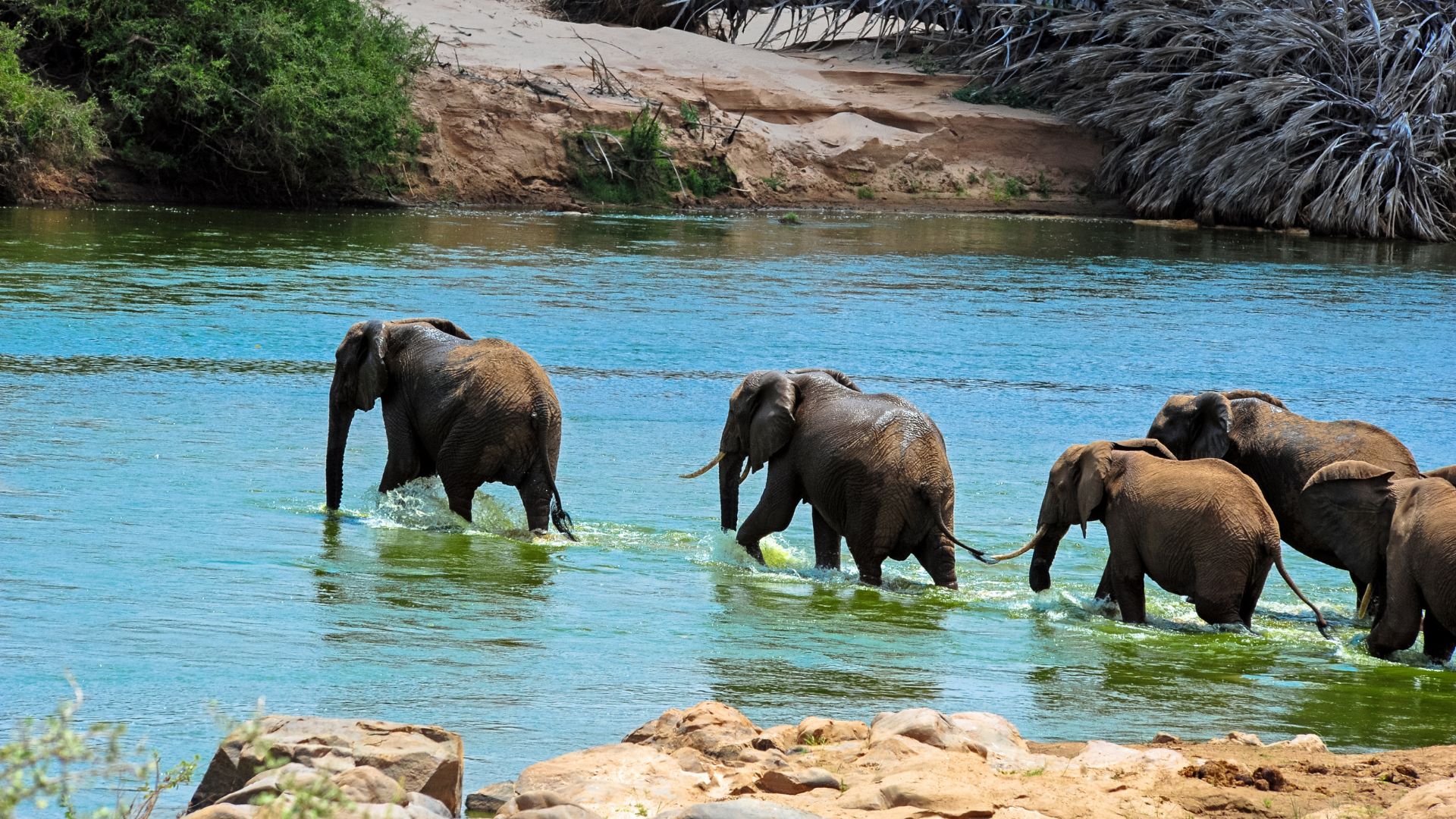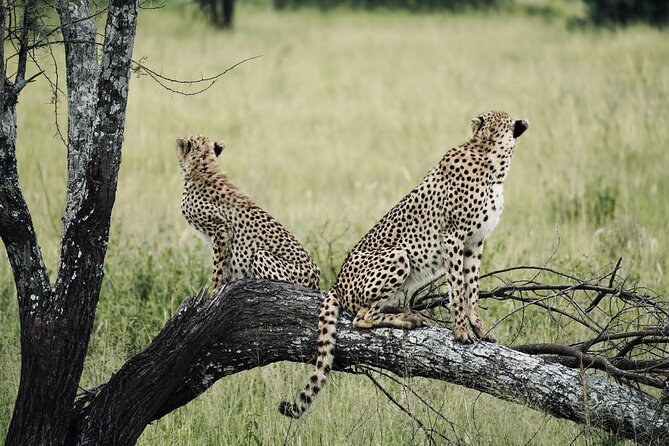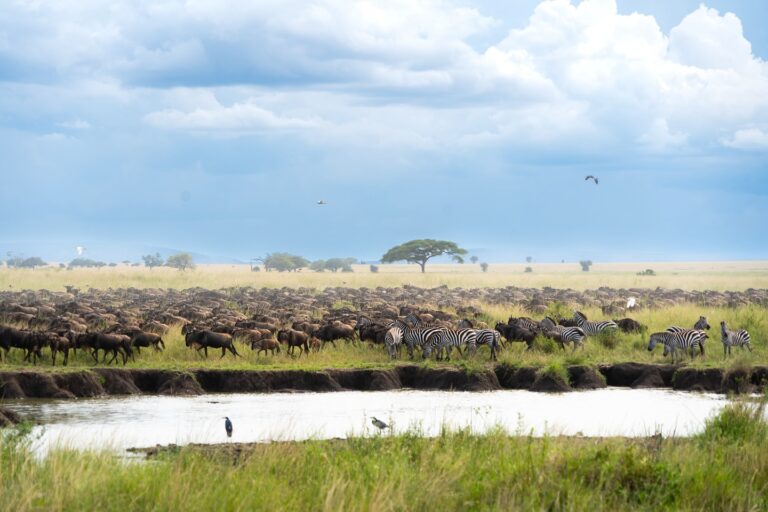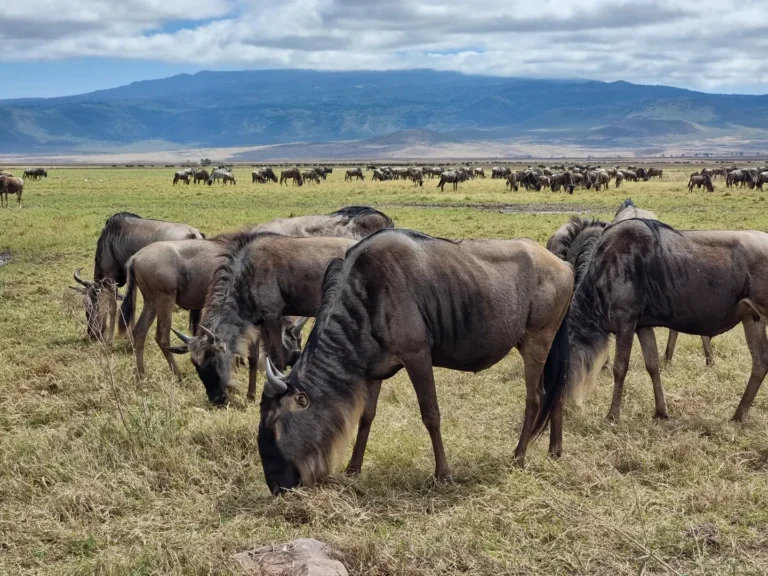What Makes Serengeti Elephants So Remarkable?
The Beauty of Elephants in the Serengeti
Elephants are among the most awe-inspiring creatures you’ll encounter during your Serengeti safari. Not only that, With over 7,000 individuals roaming the Serengeti, So as reported by the Tanzania Wildlife Research Institute (TAWIRI), and the chances of observing a herd of these majestic giants are high. Their presence adds to the grandeur of Tanzania’s wild landscape.
Also, you might spot the beauty of Elephants in the Serengeti at a distant line of small shapes moving across the horizon. Also From the comfort of your safari vehicle, these forms might seem tiny, almost like ants. Furthermore as you draw closer, those tiny dots grow into enormous creatures, towering over you with tree-sized legs, flapping ears, and their unmistakable trunks.

“Let’s get closer,” your guide suggests, and you eagerly agree.
Moreover, As your vehicle picks up speed, dust swirls in the air, and before you know it, you’re within 20 feet of a herd of African bush, the beauty of Elephants in the Serengeti. This herd, numbering about 30, is slowly making its way to the river for a drink. Your guide explains that these giants can drink up to 50 gallons of water per day, roughly the capacity of a typical bathtub.
You remain speechless as you observe these massive mammals in their natural habitat, moving gracefully across the savannah. This is a moment of pure awe, an unforgettable experience.
Elephant A Symbol of the Serengeti’s Wild Majesty
No safari is complete without a close encounter with the African bush elephant, one of the iconic “Big 5” that define Tanzania’s wildlife. Also, Known for their grandeur and intelligence, these magnificent animals are impossible to miss during your Serengeti adventure.
Fascinating Facts About Elephants, Nature’s Gentle Giants.
- Species Name: Loxodonta africana
The African bush elephant is the largest of the elephant species, with African Forest and Asian elephants being the other two recognize species.
- Lifespan: 60-70 years
Elephants typically live for decades, with their lifespan often determined by the health of their teeth, which wear down over time.
- Size: 8-12 feet at the shoulder, with some reaching up to 24 feet in length
These enormous mammals can weigh several tons and have a remarkable ability to navigate their vast habitats.
- Range: Found across sub-Saharan Africa, from savannahs to forests
The African bush elephant is a versatile species, thriving in a variety of ecosystems.
- Estimated Population: Around 415,000
Furthermore, While their numbers have been significantly reduced from an estimated 3-5 million prior to the 20th century, elephants still play a critical role in their ecosystems.
- The World’s Largest Land Animal: The Majestic Elephant
Not only that, Elephants are truly the titans of the animal kingdom. Standing tall enough to reach tree branches and weighing up to several tons, they are a force to be reckoned with in their natural habitat. Their size and presence have a profound impact on the environment, maintaining ecological balance as they shape the land around them.
- Distinct Species: African vs. Asian Elephants
Types of Elephant
- African elephants: Known for their larger ears, which are shaped like the African continent, and their larger size, they thrive in diverse habitats across Africa.
- Asian elephants: Smaller, with rounded ears, they inhabit forests, grasslands, and mountains across Asia, with some notable differences in tusk size and body structure.
- African Forest Elephants: The Rainforest Giants
Roles of Elephant
Within the African elephant family, the African forest elephant stands out as a smaller, more elusive subspecies. These elephants, found in the rainforests of Central and West Africa, are distinguished by straighter tusks and a darker coat, adapted for life in dense foliage. Moreover, Though less visible, they play a vital role in their ecosystems.
- A Remarkable Memory: Elephants Never Forget
Also, Elephants are renowned for their exceptional memory, also able to recall individuals, locations, and experiences over long periods. This, helping them find resources like water and food, and maintain social bonds within their herds. Their ability to remember family members and important landmarks is key to their survival.
- Complex Social Structures: The Elephant Herd
Female elephants, known as cows, lead tightly knit family units that are often guided by a matriarch, usually the oldest and most experienced female. Moreover, These herds exhibit deep social bonds, and also elephants cooperating, showing empathy, and supporting one another through challenging situations. The matriarch plays a pivotal role in guiding the herd, ensuring their safety and well-being.
- The Elephant’s Trunk: Nature’s Multifunctional Tool
And also, the Elephant’s trunk is one of nature’s most incredible creations. Comprising over 40,000 muscles, the trunk serves numerous purposes, from grasping food to trumpeting calls, to spraying water for cooling. Its versatility allows elephants to perform delicate tasks like picking up small objects, or even tenderly interacting with other members of their herd.
- Elephant Calves: Nurturing the Next Generation
Baby elephants form incredibly strong bonds with their mothers and other herd members. These relationships provide support, nourishment, and guidance as they grow. Calves learn essential survival skills by observing and interacting with their elders, and the community collectively nurtures and protects the young.
Note:
- Elephants: Keystone Species in Their Ecosystems
Also,Elephants are considered keystone species due to their profound influence on the environment and make the beauty of the park. Their feeding habits help shape plant growth, and they create habitats for other species by uprooting trees and clearing paths. In addition, their dung fertilizes the soil, promoting plant growth and also contributing to the biodiversity of their habitats.
- Elephants by the Numbers: Key Stats You Need to Know
24,000 Pounds: The weight of a giant elephant discovered in Angola.
300 Pounds: The amount of food an African bush elephant consumes daily.
40,000 Muscles: The number of muscles in an elephant’s trunk.
50 Years: Moreover, The age at which elephants can still mate.
August 12: In addition, World Elephant Day, dedicated to raising awareness about elephant conservation.
Top Destinations for Spotting Elephants in Tanzania
Moreover, For the best elephant sightings, head to Tarangire National Park, the Serengeti, and the Ngorongoro Crater.
Moreover,The Beauty of Elephants in the Serengeti Awaits!!!
Start Planning Your Safari Today
In addition, Reach out to Afrima Luxury Travel to begin planning your personalized safari, where you’ll enjoy once-in-a-lifetime.




